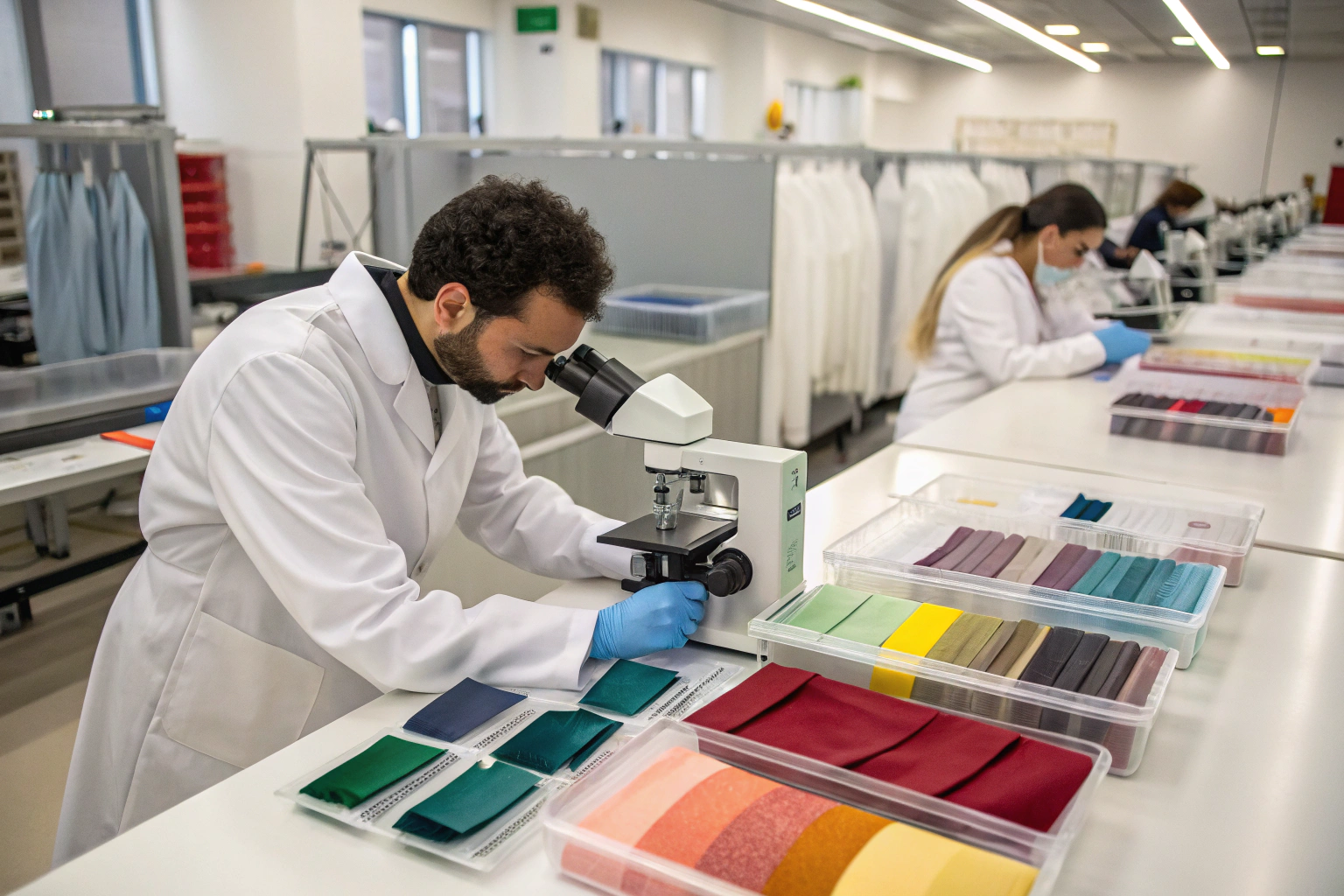In today’s textile and apparel industry, antimicrobial fabrics are more than just a trend—they are a necessity. From sportswear to hospital linens, customers want textiles that stay fresh, safe, and durable. But one big question remains: how can buyers truly know if a fabric’s antimicrobial performance is real and reliable? Many suppliers make claims, but only standardized testing provides proof. This is where the ASTM E2149 standard becomes essential.
ASTM E2149 is a widely recognized test method that evaluates the antimicrobial activity of treated textiles in dynamic contact conditions, ensuring a realistic simulation of how fabrics are actually used. For global buyers who want reliable suppliers, this standard gives confidence in product performance, quality assurance, and compliance with international requirements.
If you’re sourcing fabrics from Asia or comparing suppliers, understanding ASTM E2149 will help you avoid costly mistakes, verify true functionality, and meet the demands of increasingly eco-conscious and health-focused consumers.
What Does ASTM E2149 Test Measure?
The demand for performance textiles has never been higher. However, without proper testing, “antimicrobial” can quickly become an empty marketing term. Many buyers struggle to separate fact from fiction when reviewing supplier claims.
ASTM E2149 measures the reduction of microorganisms on antimicrobial-treated fabrics under shaking conditions, simulating real-world contact and movement. Unlike static methods, it reflects how fabrics actually interact with bacteria in daily use.
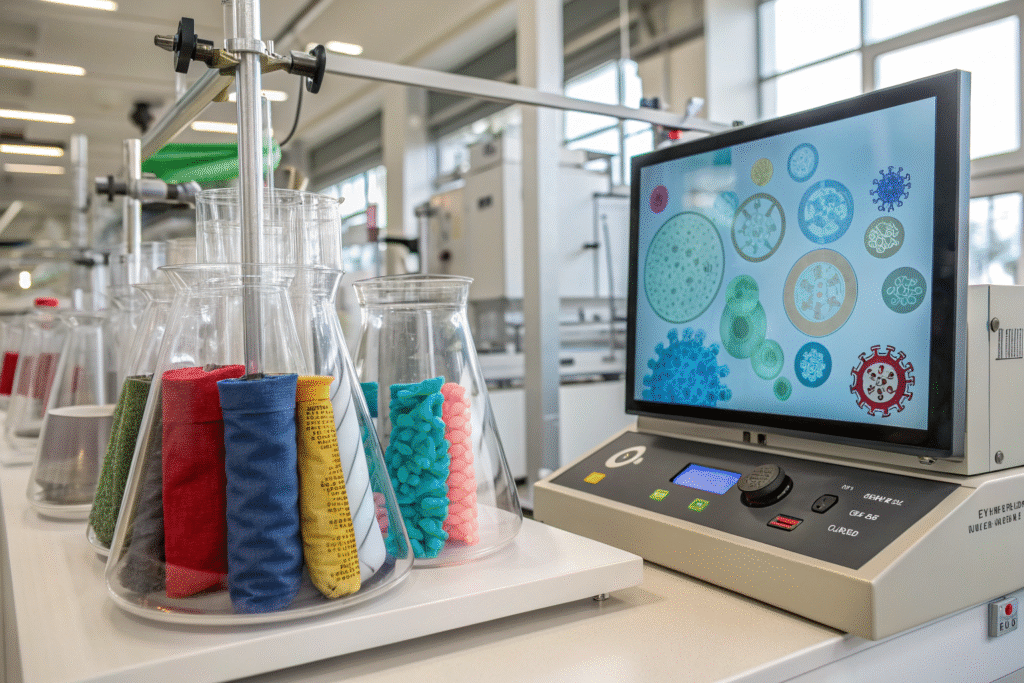
This standard is important because it uses quantitative analysis. It shows not only if bacteria are reduced but by how much, giving measurable results in log reduction or percentage effectiveness.
How Does ASTM E2149 Work in Practice?
The method places a treated fabric sample in a solution with a known concentration of bacteria. The container is then shaken to simulate dynamic contact. After a set time, the bacteria are counted and compared to a control fabric. Suppliers that meet this standard can prove real effectiveness in antimicrobial performance. For further reading, you can check resources like ASTM International and Microban’s testing guide.
Why Is Dynamic Contact Testing More Reliable?
Static testing methods don’t represent real-life conditions. Fabrics move, stretch, and rub against skin and surfaces. Dynamic testing ensures antimicrobial claims hold up in everyday situations. Buyers who rely on this standard avoid overpaying for products that fail in actual use. You can also explore Intertek’s antimicrobial testing services and SGS textile certification.
Why Is ASTM E2149 Important for Textile Buyers?
In the global fabric trade, reliability is everything. Buyers face risks like false claims, inconsistent quality, and regulatory penalties. Without recognized testing, choosing a supplier is like buying blind.
ASTM E2149 offers buyers a trusted benchmark for antimicrobial fabrics, giving confidence in supplier credibility and fabric performance.
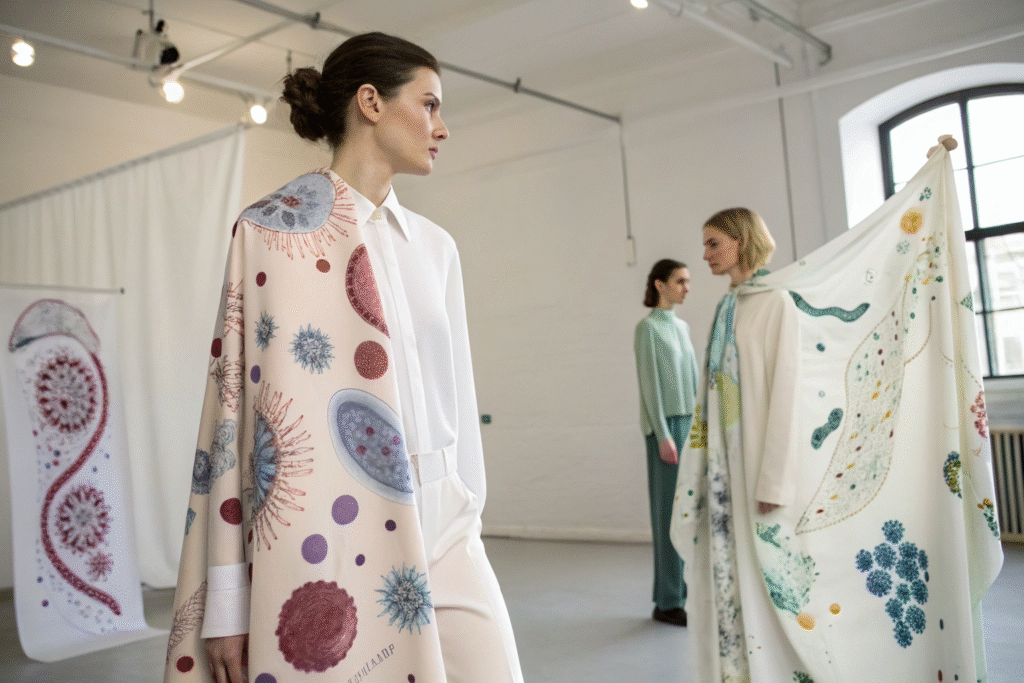
It helps ensure compliance with health, safety, and eco-regulations in key markets such as the U.S. and EU. For buyers, this means reduced liability and stronger market positioning.
How Does It Protect Against False Supplier Claims?
Many factories say their fabrics are antibacterial, but without testing, buyers cannot prove it. ASTM E2149 provides scientific results that prevent misleading claims. This is particularly important for apparel brands selling in strict markets like the U.S. and Europe. Reliable references include EPA textile guidelines and OEKO-TEX certification.
Can ASTM E2149 Help with Market Access?
Yes. Meeting ASTM E2149 helps suppliers and buyers clear customs checks, pass retailer audits, and win certifications. Global retailers increasingly require proof of performance testing, and ASTM standards are recognized worldwide. Learn more through Bureau Veritas testing solutions and UL’s textile testing lab.
How Does ASTM E2149 Compare to Other Standards?
Not all antimicrobial tests are created equal. Buyers need to know how ASTM compares with other international standards to make smart sourcing choices.
ASTM E2149 is dynamic and simulates real-life use, while other tests like ISO 20743 and JIS Z 2801 are static and may not reflect actual wear.
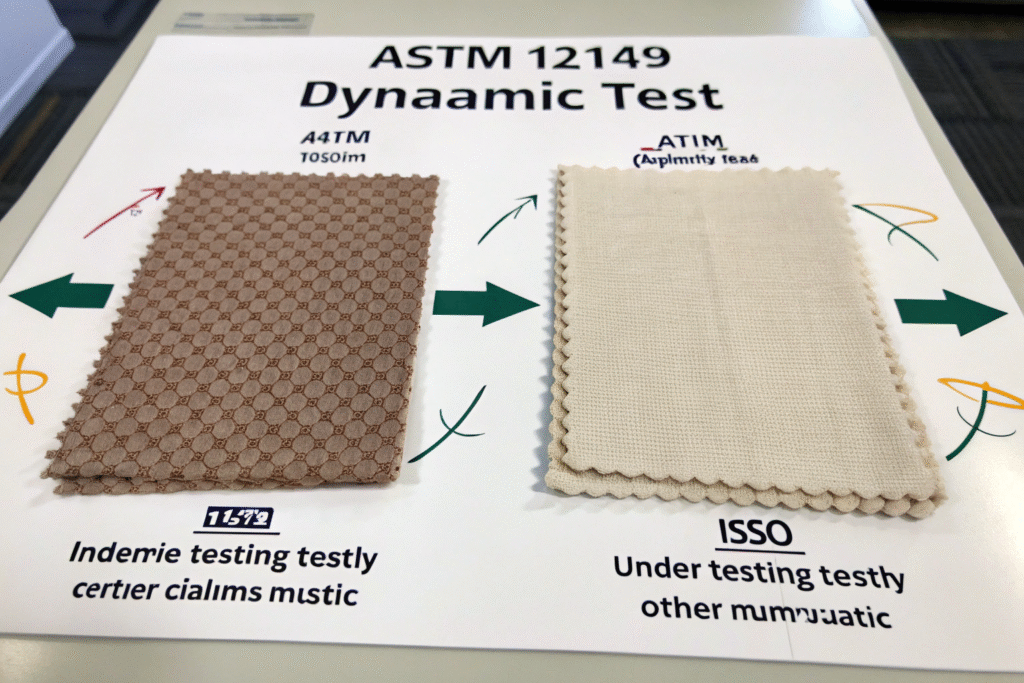
For performance fabrics, ASTM E2149 gives stronger evidence of real-world durability. However, many brands require multiple test reports for full compliance.
How Does ASTM E2149 Differ from ISO 20743?
ISO 20743 tests fabrics in contact with bacteria but under static conditions. It’s widely used in Asia and Europe but doesn’t fully simulate wear and tear. ASTM’s dynamic method is often preferred for sportswear and outdoor gear. For comparisons, check ISO 20743 standard info and AATCC antimicrobial testing methods.
Should Buyers Rely on More Than One Test?
Yes. ASTM E2149 is excellent for proving real-life performance, but combining it with ISO or JIS tests offers complete assurance. Many brands request multiple certifications before approving a supplier. Useful references include Testex testing services and Hohenstein textile labs.
How Can Fumao Fabric Support Buyers with ASTM E2149?
Finding a supplier that can deliver tested, high-quality antimicrobial fabrics is not easy. Many factories lack proper labs or global certifications.
At Fumao Fabric, we provide fabrics tested under ASTM E2149 to guarantee effectiveness, supported by our CNAS-accredited lab and strict quality control.
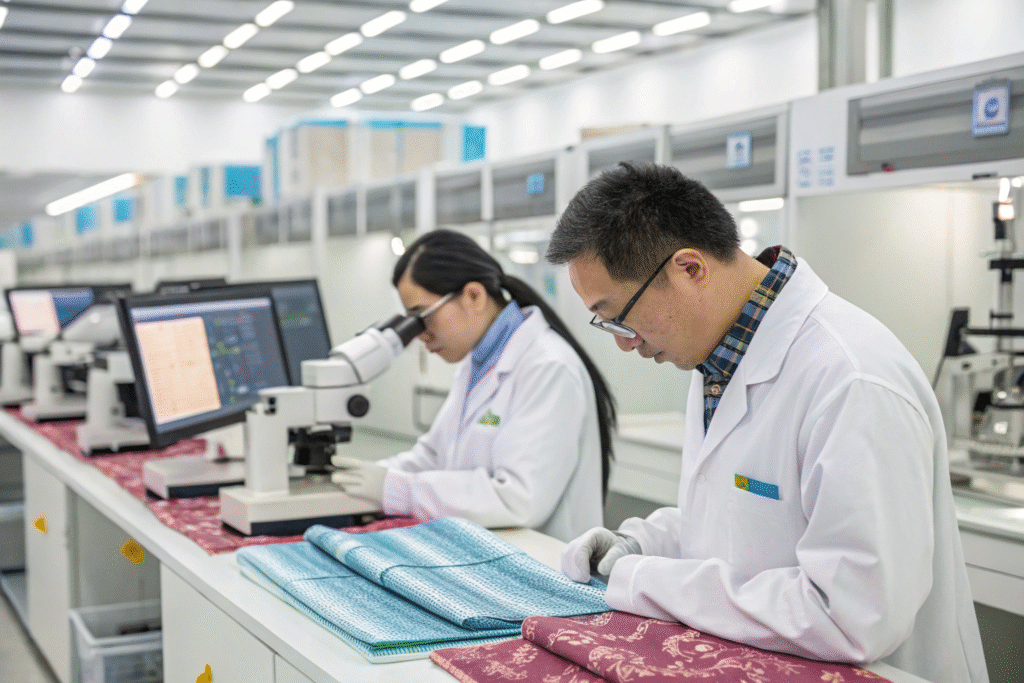
Our advantage is not just testing but also speed, customization, and end-to-end service from weaving to shipping.
What Value Do Buyers Gain from Fumao Fabric?
We ensure every shipment comes with full quality documentation, including ASTM E2149 reports when required. Buyers save time and reduce risks, knowing that fabrics already meet international expectations. Trusted partners like ITS Intertek and SGS collaborate with us for global credibility.
Why Partner with Us for Long-Term Success?
We don’t just sell fabrics. We work with brands to co-create functional textiles that align with consumer needs for safety and sustainability. Buyers who work with us gain reliable supply, fast R&D, and lower risks of compliance failures. Learn more about textile sourcing insights at Just-Style and Textile World.
Conclusion
ASTM E2149 is more than just a test—it is a key tool for buyers who want confidence in antimicrobial fabrics. It ensures that performance claims are real, protects brands from regulatory risks, and helps fabrics succeed in global markets. For buyers sourcing from Asia, choosing a supplier that provides ASTM E2149 reports is one of the smartest moves for long-term success.
At Shanghai Fumao, we are ready to support global buyers with ASTM-tested, eco-friendly, and high-performance fabrics. If you are interested in developing your own antimicrobial textile collection, contact our Business Director Elaine at elaine@fumaoclothing.com today. Together, we can build fabrics that meet the highest global standards and deliver true value to your brand.

